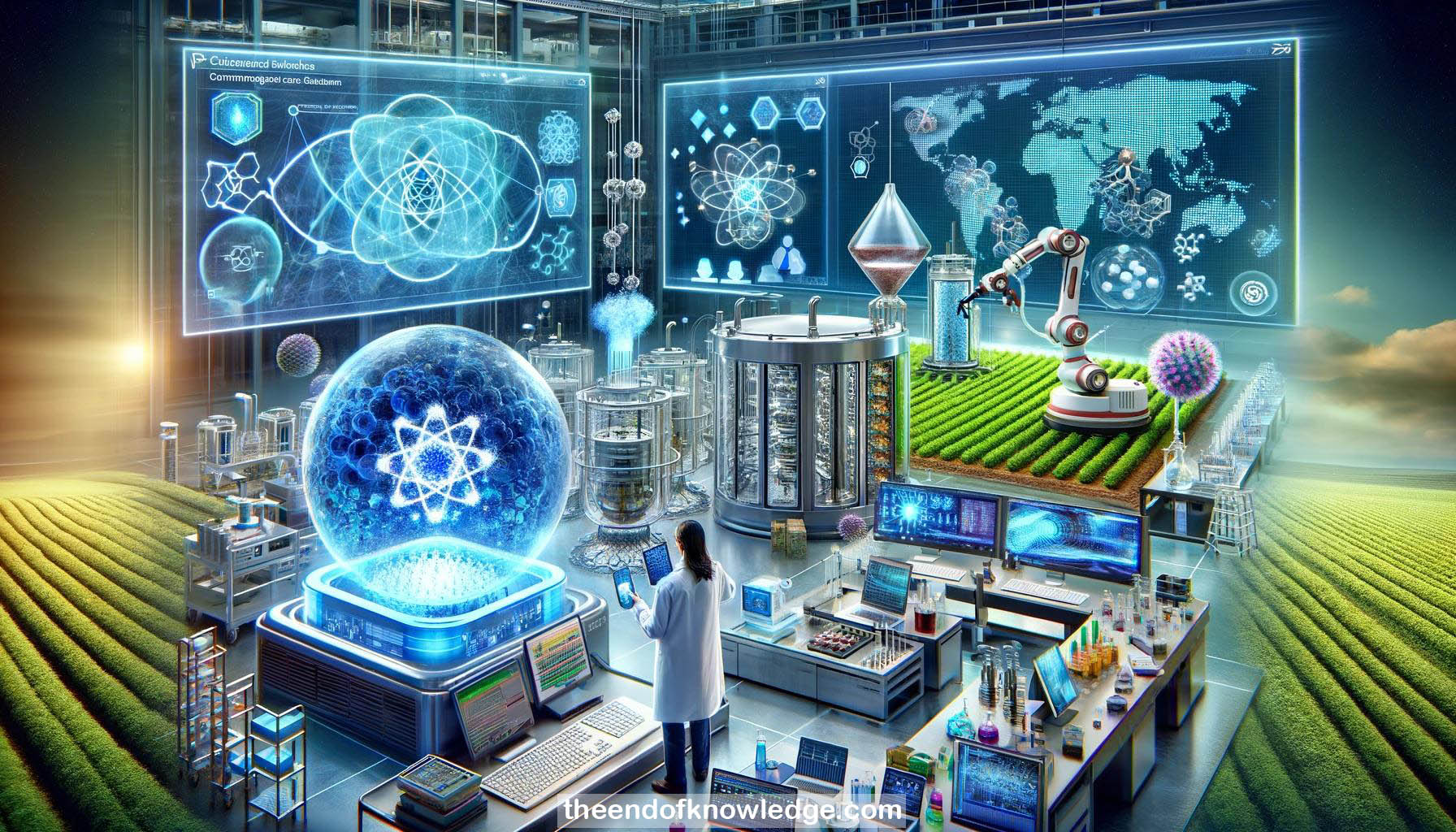 >
>
Concept Graph & Resume using Claude 3 Opus | Chat GPT4o | Llama 3:
Resume:
1.- Dario Gil, Director of IBM Research, discusses the urgency of science and the relationship between the computing revolution and scientific opportunities.
2.- Despite advances, there are still many complex problems to solve in the world, as highlighted by the current pandemic.
3.- The path forward is accelerating scientific discovery to find treatments and cures. Science provides critical knowledge for decision-making across many domains.
4.- Scientific discovery has evolved from empirical to theoretical to computational approaches. AI and big data are enabling a new era of accelerated discovery.
5.- AI can enhance each stage of the scientific method - integrating knowledge, hypothesis generation, experimentation, testing, and reporting results to enable faster iterations.
6.- Applying AI to the language of chemistry allows predicting reactions and autonomous robotic labs to accelerate materials discovery by orders of magnitude.
7.- In the next 5 years, AI-accelerated chemistry could lead to breakthroughs in carbon capture, fertilizers, batteries, electronic materials, antivirals and more.
8.- The future of computing is a convergence of bits (classical), neurons (AI) and qubits (quantum), each with complementary strengths.
9.- Modeling nature, such as chemical interactions, is an exponentially difficult problem for classical computers that quantum computers are well-suited to tackle.
10.- While quantum computing theory has existed for decades, only recently have the first small-scale quantum computers been experimentally demonstrated.
11.- Different approaches exist to build qubits, such as superconducting circuits used by IBM. Qubits must be kept at near absolute zero temperatures.
12.- In the future, quantum circuits will be called from software to run on quantum computers via the cloud, similar to classical computing.
13.- In 2016, IBM put the first quantum computer on the cloud. Now a community of over 250K users have run 360B quantum circuits.
14.- IBM has built over 22 quantum computers and deployed them on the cloud. 110 institutions worldwide are exploring quantum computing applications.
15.- In 10 years from 2010 to 2020, IBM went from a 1 qubit device to a 65 qubit processor, showing rapid progress.
16.- IBM announced a roadmap for 1121 qubits in 2023 with a 100x reduction in errors, a significant inflection point towards larger, more powerful systems.
17.- To house 1 million qubits, IBM is building a 10ft tall cryostat called "Goldeneye" that takes 14 days to cool to near absolute zero.
18.- Alongside AI and quantum, new communities of discovery are needed to address the urgency and complexity of today's scientific challenges.
19.- Communities go beyond individuals, institutions and partnerships by combining common purpose, methodologies and sharing of outcomes at greater scale.
20.- The COVID-19 High Performance Computing Consortium is an example of a massive community of discovery across industry, government, and academia.
21.- Formed in 5 days without contracts, the consortium has 40 members, 600 petaflops of computing power, and 85 projects across basic science, therapeutics, and epidemiology.
22.- The unprecedented collaboration was inspired by historical examples like the scientific mobilization during WWII and the creation of the NSF afterwards.
23.- A proposal to create a "Scientific Readiness Reserve", like the National Guard, to aggregate and deploy scientific talent rapidly when needed.
24.- The Urgency of Science project aims to be a public good to make the case for and enable new ways to accelerate scientific discovery.
25.- Diversity of cultures, geographies and institutions is a competitive advantage. Traditional knowledge should be integrated with the scientific method.
26.- While AI and quantum will be powerful, they are complementary to human intelligence. Technology alone won't automate everything - people are still critical.
27.- Communities of discovery need to span the full cycle from identifying problems to implementing solutions, not just publish papers and stop.
28.- Discovery inspires new problems to solve, creating a virtuous cycle between fundamental research and applied impact when done collaboratively.
29.- For science to meet society's urgent needs, we need creativity in how academia, government, industry and citizenry work together with shared purpose.
30.- This conversation is a starting point and an invitation for the audience to join IBM's "common good project" to accelerate science together.
Knowledge Vault built byDavid Vivancos 2024